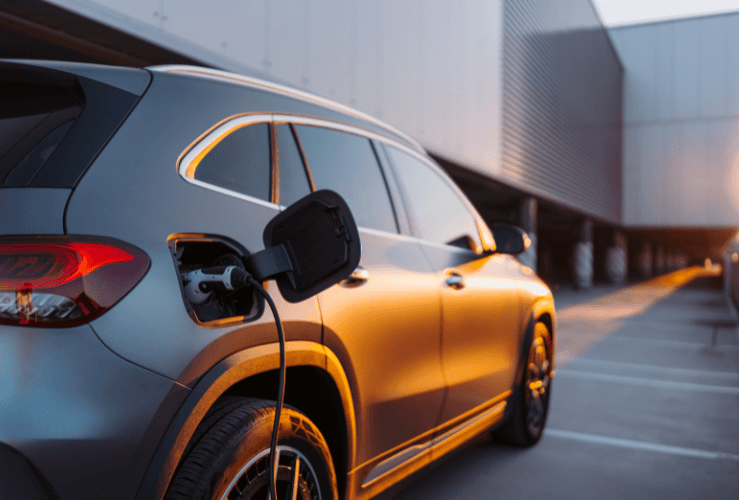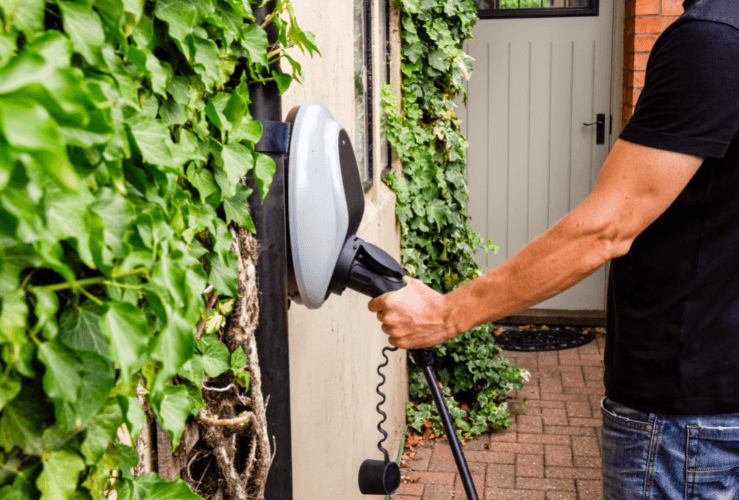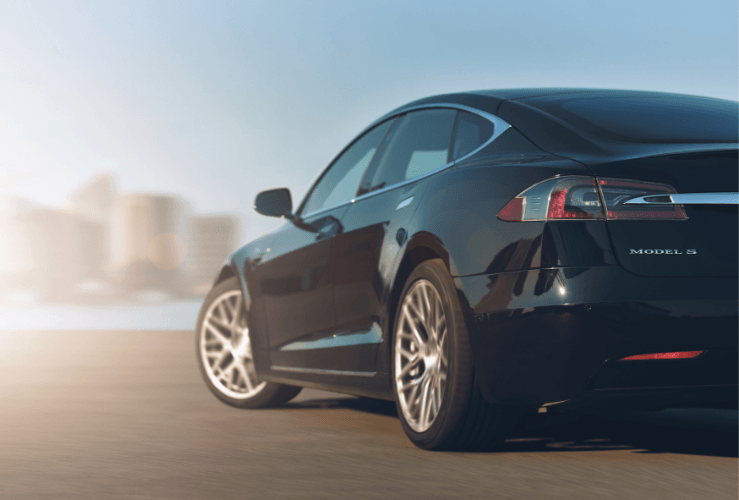With less than seven years to go before the government bans the sale of cars and vans with petrol or diesel engines, many drivers are thinking about going electric.
But if you've spent years driving combustion-engine vehicles, the prospect of making the switch can be daunting.
Questions you have might include: What electric car should I buy? How much range will I need? How will I charge it? And how will I finance it?
Here we answer these questions and more.

Should you go fully electric?
There are three main types of cars that use electric motors: electric vehicles (EVs); hybrids (HEVS); and plug-in hybrids (PHEVs).
A fully-electric car is driven by an electric motor only.
By contrast, HEVs and PHEVs use electric motors for lower speed, urban trips and its petrol or diesel engine for longer trips and faster motorway journeys.
As with a fully-electric vehicle, PHEV’s can be recharged using a charge point. With a HEV, it is not possible to charge the vehicle using a chargepoint, instead the ICE (Internal Combustion Engine) re-charges the battery.
Sales of hybrids will last for an extra five years - ending in 2035 - as long as they meet high environmental performance criteria.
In the long term, hybrids will go the same way as petrol and diesel engine vehicles.
With hybrids using around 30% less fuel than conventional vehicles, they are a good option for those wishing to reduce outgoings. They are especially economical if most of your journeys are in urban areas and are less than 30 miles.
While a hybrid costs less to maintain than a combustion engine vehicle, they cost more to keep on the road than a fully electric vehicle.
That said, battery degradation is a risk for both hybrids and EVs.

Can you charge your EV at home?
As we move into 2023, being able to charge your EV at home is a key aspect of having a rewarding user experience.
While the UK’s charging network is expanding all the time, so too are the number of EVs on our roads.
This means the UK’s charging network is under a great deal of pressure. With higher usage comes increased faults, in turn reducing availability of working charge points.
It's not uncommon for queues to form at charging sites in some parts of the country - making it potentially a lot slower than filling up with petrol or diesel.
With the overstretched public charging network in mind, it's a good idea to charge at home if you can.
The good news is that around 50% of UK housing is suitable for home charging.
Additionally, EV charge point grants are available to help with the cost of installation. For example, if you own or rent a flat, you can get either £350 or 75% off the cost of installation (whichever amount is lower).
What type of households are less suitable for home EV charging?
If you don’t have a driveway or you live in a flat, setting up and using a home EV charger can be a challenge. For one thing, if you need to trail the charge cable across a pavement, you could be liable if anyone trips over it and hurts themselves.
Council rules on how home chargers can be used vary across the country.
The government's On-Street Residential Charge Point Scheme aims to tackle this problem by installing more public charge points.

Credit: Melih Evren - stock.adobe.com
How much is an electric car?
Since they became available to buy, EVs have cost more than their petrol or diesel equivalents.
Chip shortages and increasing raw material costs have seen prices increase further - for both EV and combustion engine vehicles - but the end result is that EVs are even less attainable than they were a few years ago.
The cost-of-living crisis - sparked by inflation outstripping wages, together with tax increases - has meant households think more carefully about making big purchases such as EVs.
The UK’s cheapest EV is the Citroen Ami (actually a quadricycle) at £7695; while the most costly is the Mercedes-Benz EQS SUV at £129,170.
But aside from a few EV models from the likes of MG, Mini and Fiat, most have a starting price of around £30,000.
By comparison, you can still find a brand-new petrol car for under £15,000.
The cost of charging vs petrol
Home charging costs are still very affordable if you're on a suitable electricity tariff. However if you're compelled to use public charge points, or need to use them for long distance trips, the cost becomes roughly equivalent to petrol or diesel.
With this in mind, one of the key benefits of going electric has been all but eliminated.
Add to this the premium paid for EVs and those on a budget may find the idea of ditching their petrol or diesel internal combustion engine (ICE) vehicle less attractive.
PCP deals: Petrol/diesel vs electric
PCP (personal contract purchase) deals with 0% APR can make such ICE vehicles even more attractive (although a hefty deposit is often required). For smaller petrol vehicles, monthly repayments can be between £100 and £200.
When it comes to EV finance deals, the cheapest are in excess of £300 a month. In this bracket are models such as the Peugeot e-208 and the Volkswagen ID.3.
For a higher spec EV, such as a Tesla Model 3, you'll be looking at around £570 per month.
EV leasing options
An alternative to buying outright or a PCP deal is to lease.
This works the same way as leasing an ICE vehicle: you pay an 'upfront' portion of the total rental amount, then make monthly payments for the rest of the lease.
The more you pay upfront, the less you'll pay each month afterwards. However, by making a large down payment, you probably won't save a huge amount over the course of the lease - but you will lose access to a large chunk of money (that might be used for other household costs in the short term).
The EV buying process
Most EVs are sold in much the same way as traditional cars - through dealerships. However, Tesla’s sales model is online-only - where you choose your vehicle on the Tesla website and have it delivered to your address. Other electric car brands and retailers are beginning to use this distribution model, too.
Due to its simplicity, the online model is considered by some to be the best way to buy an electric car.
You can still book a test drive beforehand, so you’ll know if the model suits you before you part with your cash.
 Credit: Oleksandr - stock.adobe.com
Credit: Oleksandr - stock.adobe.com
Consider a used EV
If your budget is limited but you still want to participate in the EV revolution, a second-hand electric car could be an option.
The key benefit of a used EV is of course that it costs less. But even though it's pre-loved, it will still deliver cost benefits in terms of refuelling, tax and maintenance.
On the downside, you need to think about if or when you'll need to replace the battery. An EV's lithium-ion pack will lose range by around 2% each year.
When considering a particular used model, ask to see its range when fully charged - then compare it to the range when the model was new. However, ensure its a like-for-like comparison - a newer variant will almost certainly boast superior range.
Once you know how far it will go on a single charge, you can decide if it suits your needs or not.
Do note, however, that the stated range of older EVs at time of sale may be overstated - to the tune of up to 30% in some cases.
Even if you buy a used EV that has lost some of its range, it's worth bearing in mind the average UK daily mileage is just 20 miles.
If you rarely make journeys in excess of 60 miles and have a home charging system, then buying an electric car that’s been pre-owned could make sense for you.
How much range do I need?
Range anxiety remains a concern for would-be EV buyers.
In order to get a good amount of range, you need to pay more.
For example, an entry level Nissan Leaf offers 149 miles of range - which isn't ideal if you make longer journeys; to acquire a variant of the Leaf with 239 miles of range, you'll need to fork out several thousand pounds extra.
Taking a long term view, lower charging costs will eventually mean this long-range premium is repaid - but it will take many long distance journeys for this to be the case.
Your range anxiety may be unfounded
It's understandable a new EV driver will be concerned how they will recharge their vehicle - and how often.
But as a recent survey sponsored by Castrol found, a car with 319 miles of range, used by someone averaging 40 miles a day, would only need to charge their EV once every six days (assuming they never let the charge dip below 20%).
The Covid-19 pandemic has increased the work-from-home culture, so you need to take your commuting patterns into account when considering how much range you actually need.
And since the UK is so compact, you're never too far from a charge point (even if that charge point is somewhat oversubscribed).
The same can't be said for vast, relatively unpopulated places like Wyoming or North Dakota in the USA, where charge points are simply too far away for an EV to be practical.
All that said, manufacturers are working hard to deliver better range with each new model.
For example, the very first Nissan Leaf (2011/12) had a paltry range of 73 miles, while the marque's entry-level Leaf now offers 149 miles of range.
As a rule of thumb, range is doubling every decade, although that knowledge will be less of a boon if you want to buy an EV right now.
Consider a longer range model if you need to
If you need an EV with a longer range - perhaps because you plan to take long-distance road trips or travel far for work - rest assured there are many options.
The Lucid Air boasts the longest range of all EVs - at 520 miles. It's not yet available in the UK - but should be from summer 2023 (from £61,744 new).
The next most "rangey" EV is the Tesla Model S Long Range, with 405 miles in a fully charged battery pack (from £55,935 new).
Tesla's Model 3 comes in third place, with 358 miles of range (from £48,490 new).
Naturally, the convenience of longer stints between top-ups (giving you the ability to get from London to Newcastle on a single charge), will cost you.
Here are the top 10 EVs with the longest range
 Credit: OceanProd - stock.adobe.com
Credit: OceanProd - stock.adobe.com
Consider performance
If you're new to the world of EVs, you may be concerned about performance - but you shouldn’t be.
Because electric motors are far simpler than their combustion engine counterparts, they offer great acceleration.
Even an entry-level Nissan Leaf has a 0-60mph time of 7.9 seconds, while a Tesla Model 3 has a 0-60mph time of as little as 3.1 seconds (the kind of time you'd get from a petrol-powered supercar).
However, top speeds can be rather unimpressive in the lower-priced EV segment; A Nissan leaf is capped at 89 mph to help preserve battery life.
A Model 3, however, has a top speed of 162 mph.
But in reality, top speeds are academic since the fastest you can drive in the UK is 70mph.
When to buy an electric car? Should I wait?
The UK government's 2030 ban on the sale of petrol and diesel vehicles has focussed minds in the car industry - and among the motoring public.
Some argue this date - just seven short years away - is too ambitious given the rate of EV take-up and under capacity/availability in the nation’s charging network.
Shortages of chips and materials are also making it harder for manufacturers to keep pace with demand.
However, at time of writing the government is intent on meeting the 2030 target, so now could be the ideal time to make the switch.
That said, as time goes on, EV and battery technologies will get better. Range will improve, and prices - once the world’s supply-chain conundrums have been solved - should come down.




